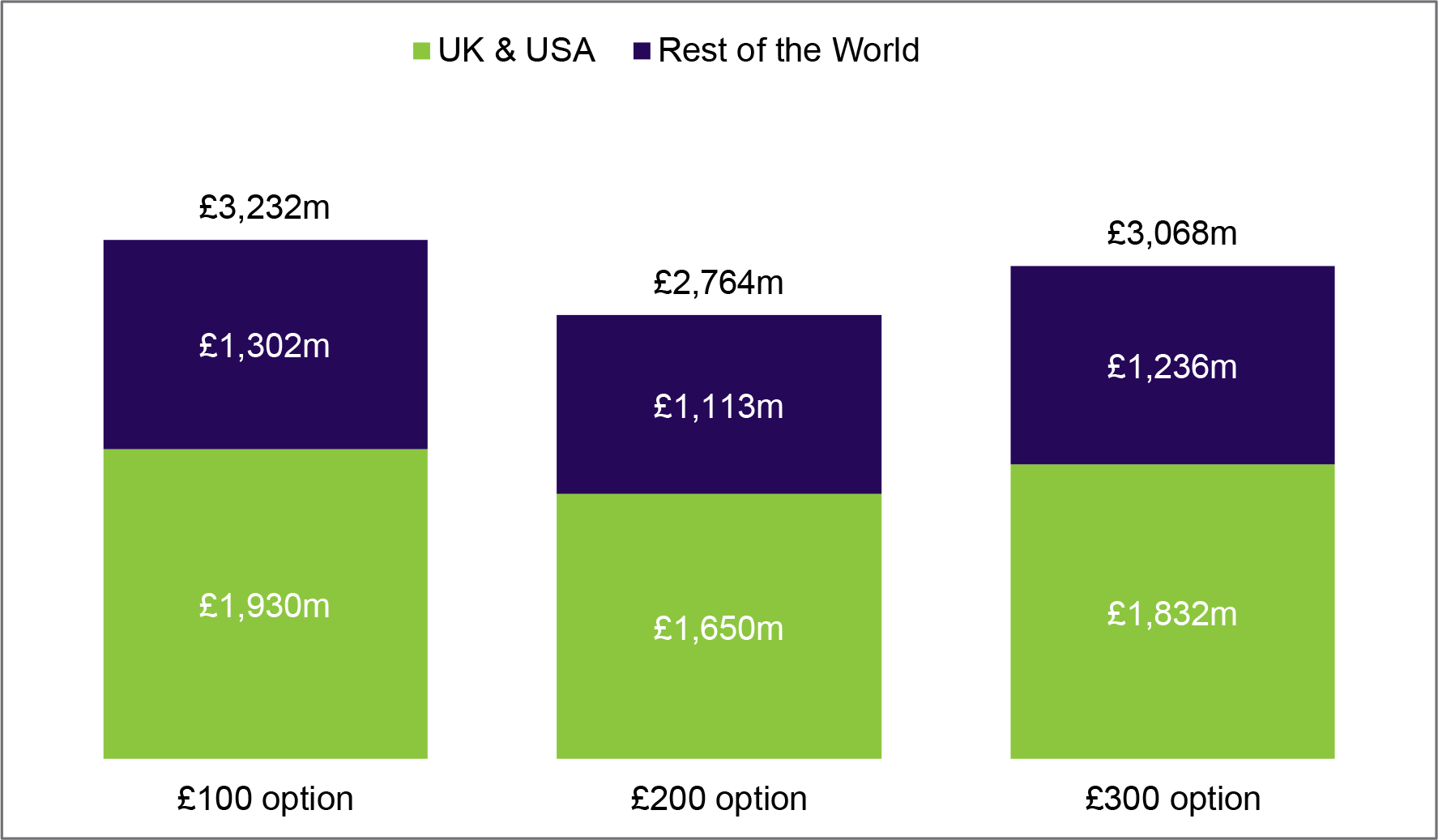Market Research
Introduction
In 2012, Lunar Mission One commissioned a privately funded independent market research study of the general public. A combined team from Future Thinking (http://futurethinking.com/) and Trajectory Partnership (http://www.trajectorypartnership.com/) had won a tendering competition to manage the work, analyse the results and produce a report.
The exercise consisted of qualitative analysis from a series of focus groups that tested the initial market concept, followed by an internet survey for quantitative analysis that delivered over 6,000 responses (half from the US and half from the UK), and finishing with follow-up focus groups that investigated in detail the issues arising from the survey.
Qualitative Results
The team’s summary of the pre-quantification focus groups is shown below:
- The idea of contributing to a billion year time capsule based on the moon is appealing to some.
- For those that are interested in contributing to a time capsule, the inclusion of DNA tends to split opinion and is a barrier to taking part for some. Potential demand therefore could be increased by allowing participants to include other items in digital format such as photos, letters etc.
- It’s important to clearly communicate how DNA will be collected; visions of blood and tissue sample extractions act as a barrier for many.
- Many are sceptical regarding the real motive behind producing a time capsule of this nature; therefore it’s important to convey the ultimate goal of the project (exploration/science) – for many this is highly motivating in itself.
- Initial cost perceptions can act as an obstruction to pay to take part; however on greater exploration, those wishing to donate DNA are willing to pay around £75 as long as some basic information about them is incorporated alongside (name and location).
- Concerns exist regarding who is responsible for the project and how revenue generated will be spent; important to be clear and transparent in communication in order to elicit trust and confidence in the project.
- Additionally many are keen to participate in the gathering of information for the public records.
- Some concerns regarding the telling of history (and whose version of history is recorded) can be jettisoned by public involvement.
- A mixture of outcomes need to be communicated in order to maximise enthusiasm and likelihood to participate in the project.
- Key to give both an emotional and more tangible benefit to take part e.g. romanticism of ‘For the record’ alongside a palpable advantage ‘For technology’.
The team’s summary of the post-quantification focus groups is shown below:
- The project is met with enthusiasm, particularly from younger individuals.
- As a concept, incorporating DNA does not act as a barrier for many when considering long term benefits of the project.
- Shorter term security and guarantee of participation is a more immediate barrier to take part, and thus reassurance is required in terms of effective (and fair) management of the project – this needs to feel fully independent and impartial to any political agenda.
- It’s important for full transparency when communicating the project’s purpose to ensure there are no hidden agendas.
- The Ark of Life effectively encapsulates the essence of the project whilst providing maximum understanding of the concept and providing a sense of inclusion.
- Exploring the Moon – Archiving the Earth feels like the most accurate representation of the project aim and this feels most appropriate for the strapline.
- Inclusion of the date in the project title is felt to be important by many.
Quantitative Results
The highlights of the survey responses to key questions are shown below.
‘Please place the following in order of importance to be included in the time capsule.’
(Prior to being told of the private personal archive)
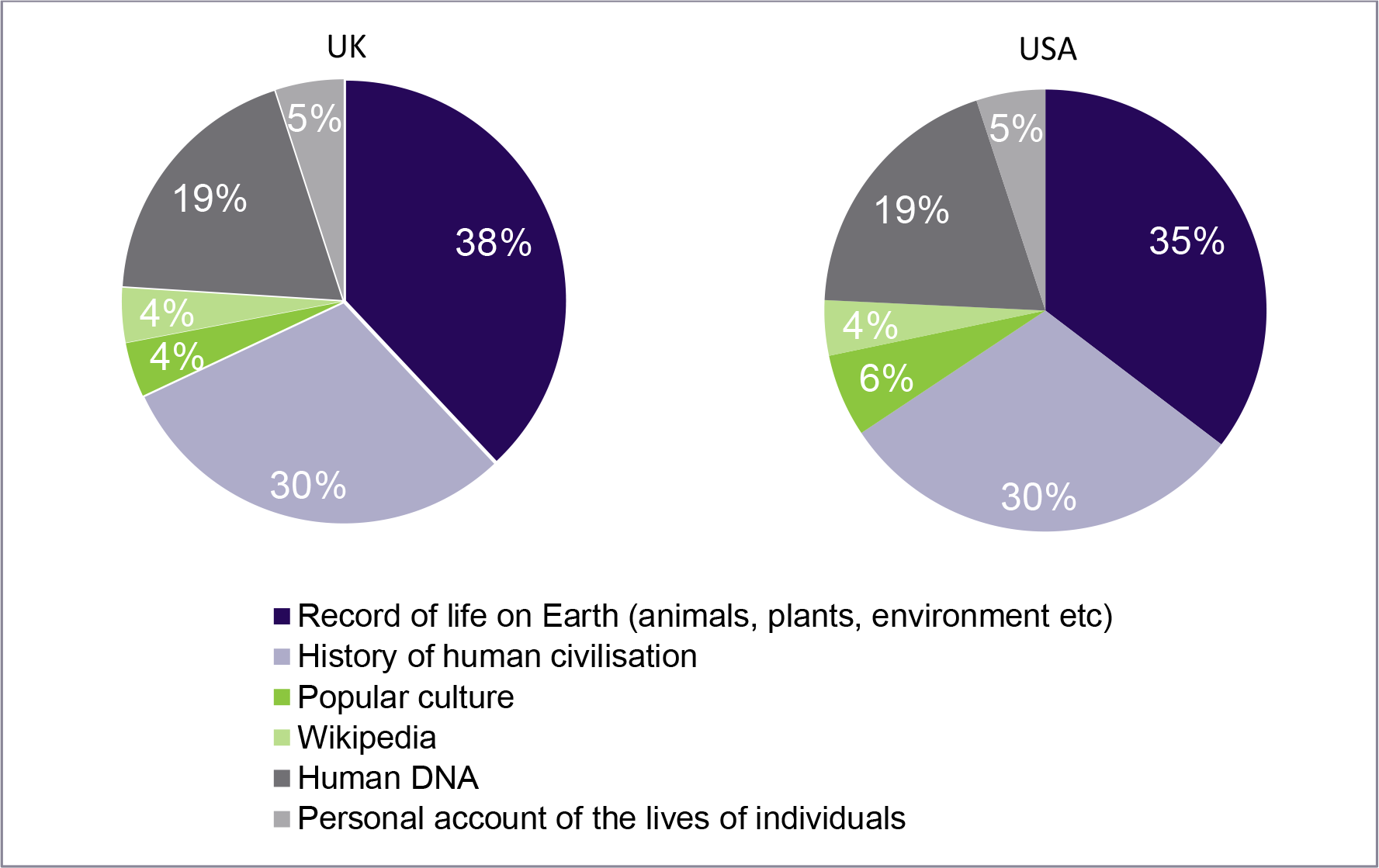
What are your feelings about the project? (After being told about the opportunity to have DNA stored)
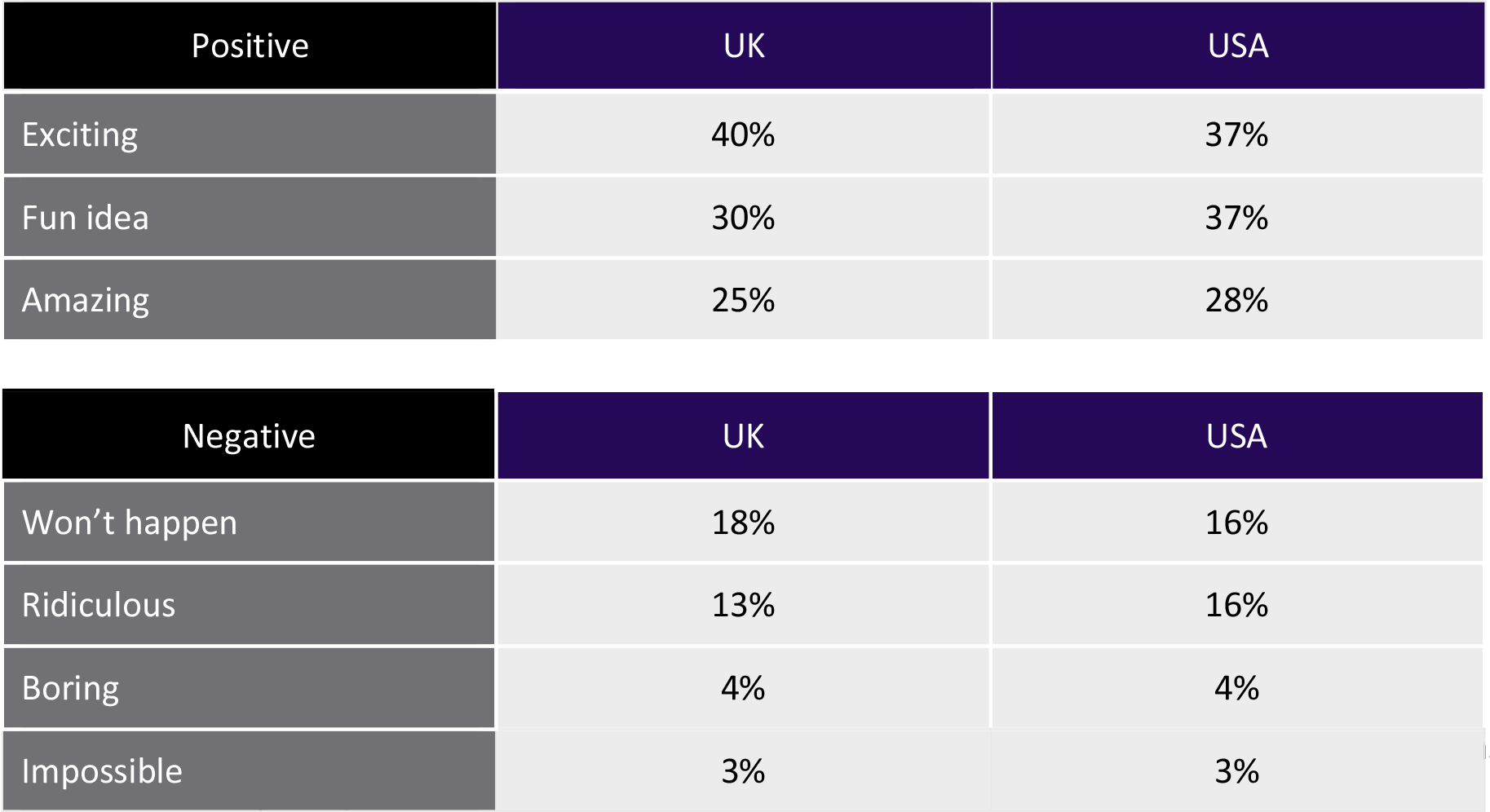
Would you want your DNA stored?
(Response number shown in brackets – UK base/USA base. No consideration of price.)

Assuming all options are equally priced, which of the following are you most interested in?
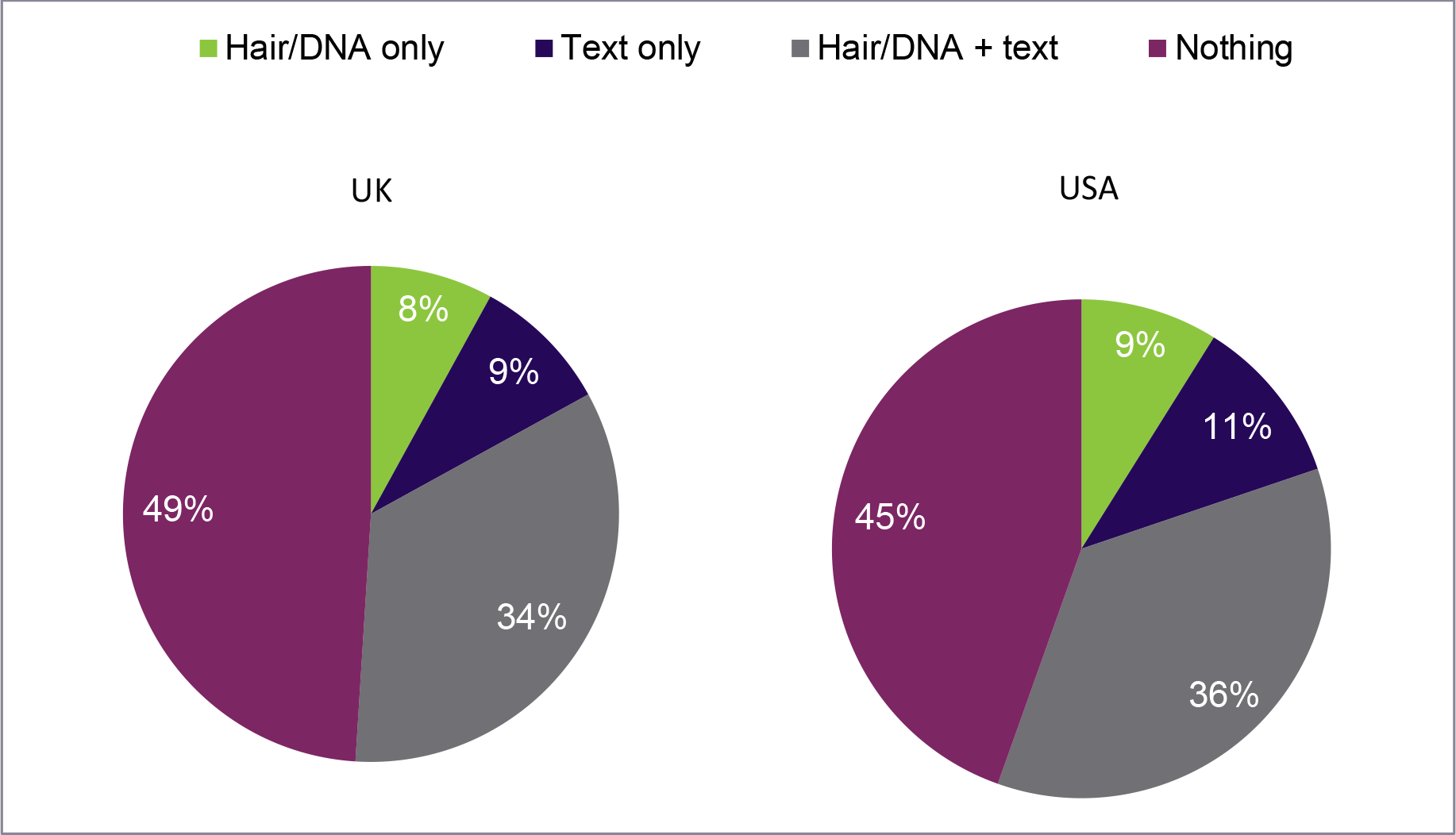
How likely would you be to pay $300/£200 to have the strand of hair and 1,000 characters of text included in the time capsule?


There will be various options available. Which of the following would you choose to purchase for yourself/as a gift?
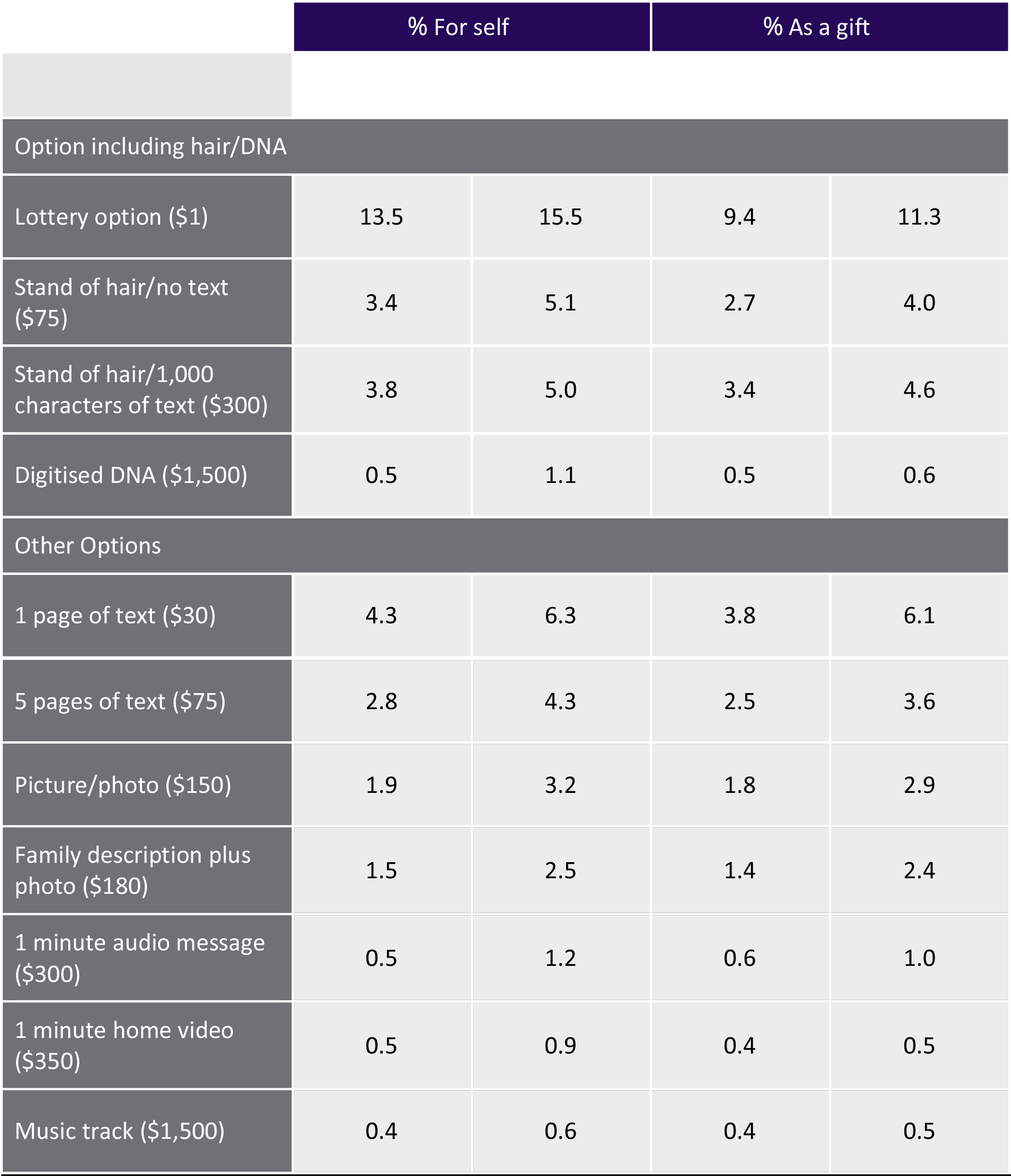
If you have indicated that you would not pay for your strand of hair to be included, why is that?
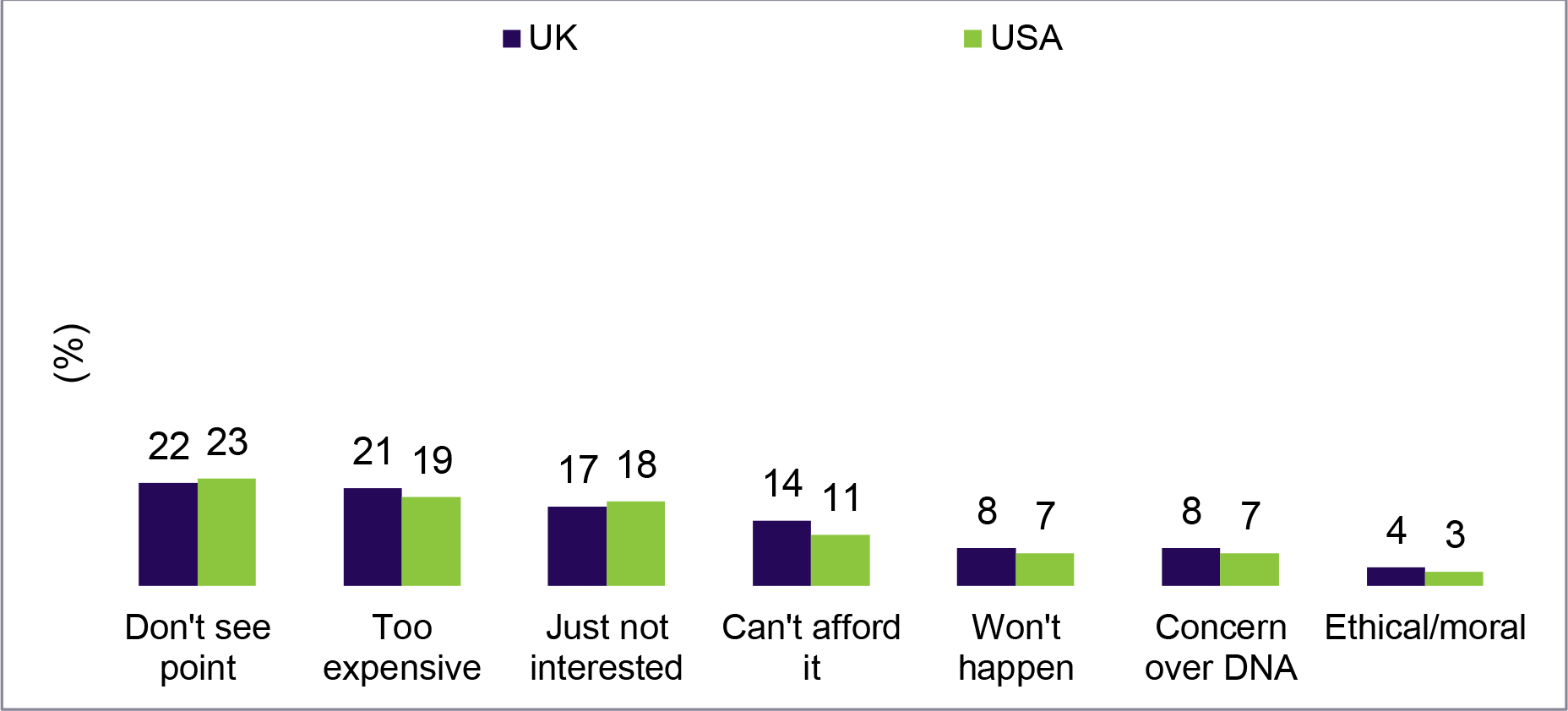
Up until now the vast majority of space exploration has been funded by Governments. This mission will be mainly funded by the private archive options we’ve just been through. Do you think it would increase or decrease the space agency’s [NASA in USA, UKSA in UK] reputation if they were to support the idea?

Companies will be able to sponsor the mission. How would sponsoring the mission affect your view of these companies?
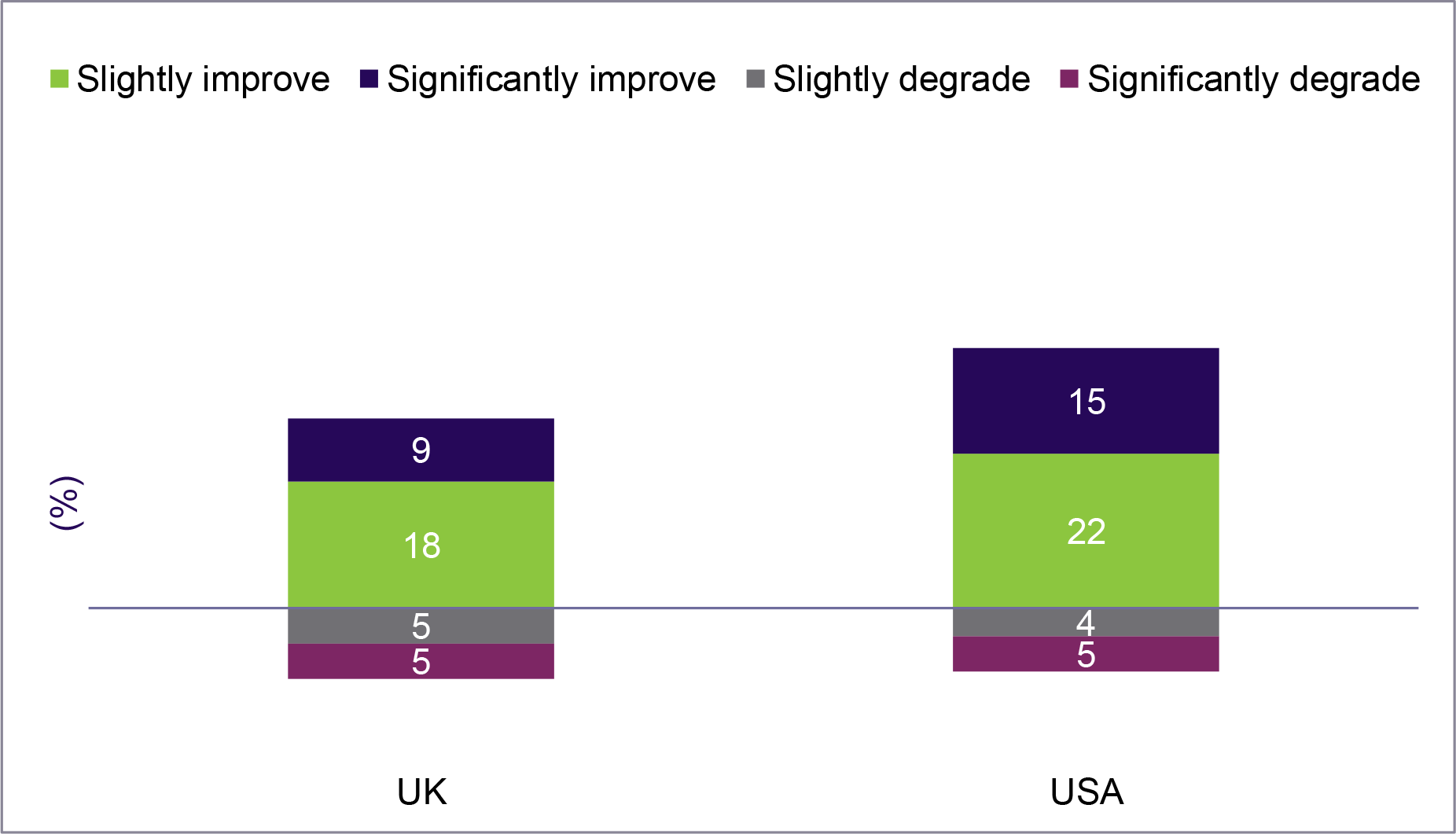
Revenue Forecast
In their survey of the US and the UK, the market research team tested three different price points – $150/£100, $300/£200 and $450/£300 – by asking the question:
- How likely would you be to pay [price] to have the strand of hair and 1,000 characters included in the time capsule?
Answers were categorised as:
- Definitely would
- Probably would
- Might, might not
- Probably would not
- Definitely would not
The team projected take-up by assuming that 80% of those who responded that they ‘definitely would’ buy would go on to do so and 20% of those who responded that they ‘probably would’ buy would go on to do so. These percentages broadly reflect what actually does happen when a product is launched after research has been carried out.
The team also assumed that 50% of the US and the UK adult populations will have a level of product awareness similar to that provided by the survey. This level of awareness would be built up over several years.
Taking the results from the research, likely awareness levels and adult populations within the US and the UK into account, the team calculated the following take-up estimates:

The team produced the following demand curve showing estimated take-up at all price levels between £25 and £350 ($40 and $500). It shows price elasticity for both countries of around -1, i.e. a 10% reduction in price leads to a 10% increase in demand. Thus in effect, alterations in pricing, within reason, should be broadly revenue neutral.
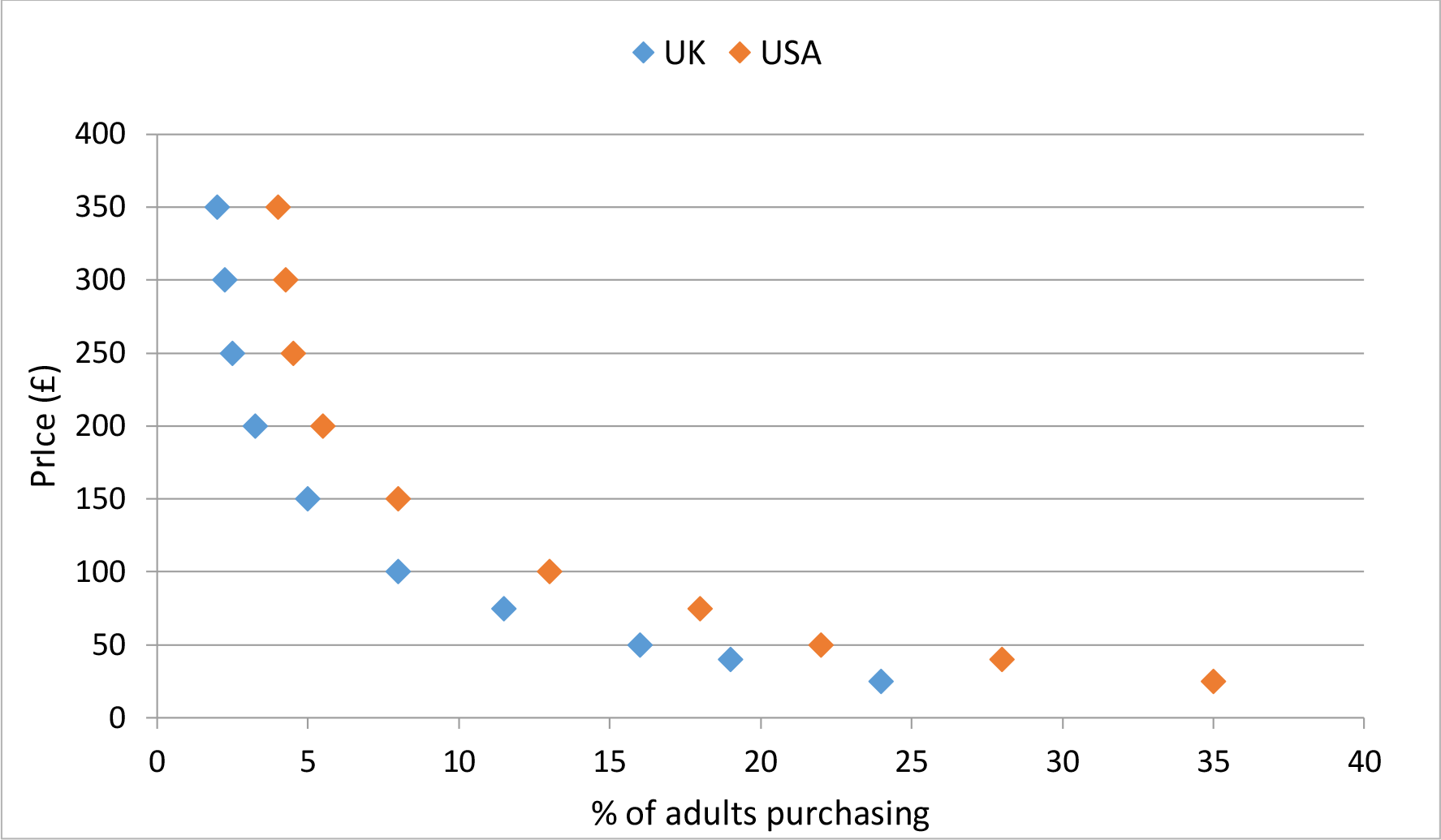
In order to form estimates for the Rest of World, the market research team grouped it into regions with broadly similar cultures. They then used the estimated take-up rates in the UK and USA and amended them extensively based on a variety of factors, which they identified as likely to have a strong impact on take-up levels within each region. The factors they identified were:
- Affluence
- Attitudes towards technological advancements
- Age profile of the population
- Religious make-up of the population
They calculated the likely awareness for each region as follows:
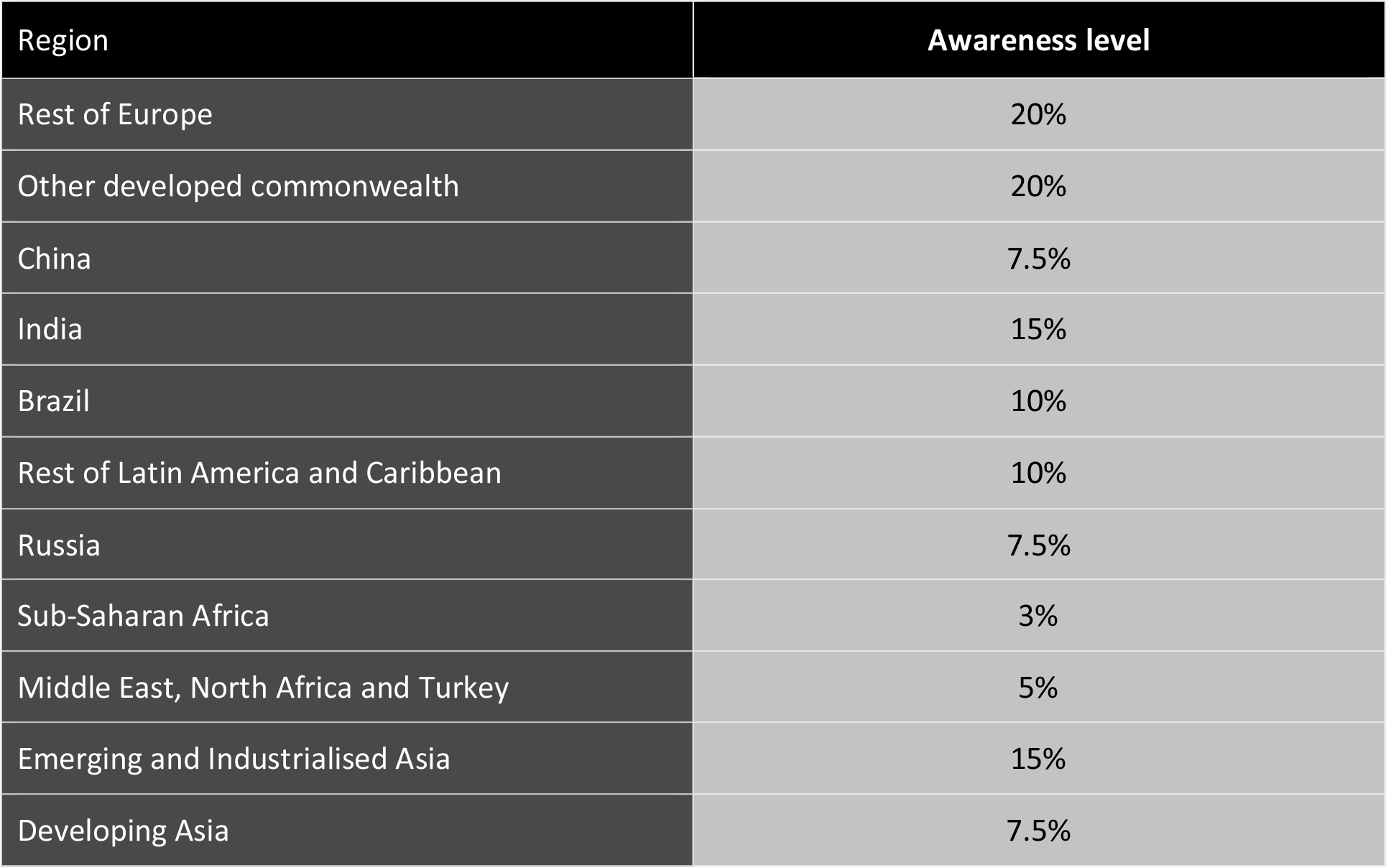
From these factors, they calculated a take-up rate which, given the adult populations of each region, resulted in the following levels for the $300 product:

Finally, the market research team calculated the overall revenues for the three price points, and concluded by averaging that Lunar Mission One’s revenue estimate is £3Bn or $4.5Bn at an exchange rate of £1:$1.5.
